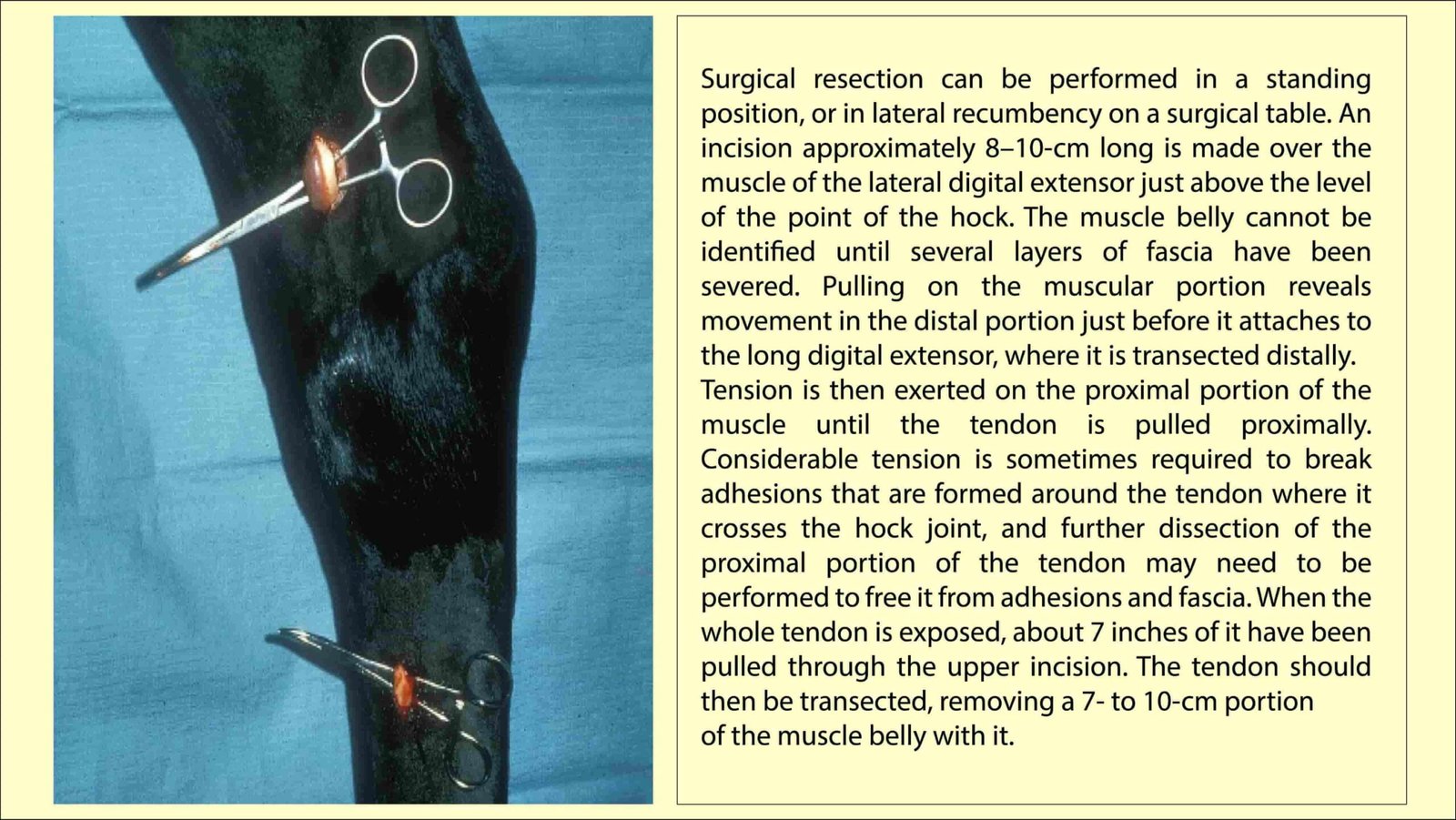TABLE OF CONTENTS
Stringhalt in Horses
Stringhalt in Horses is an involuntary hyperflexion of the hock when the horse moves, and the condition may affect one or both hindlimbs. Stringhalt is a gait abnormality characterized by exaggerated upward flexion of the hindlimb that occurs at every stride at walk. The gait abnormality usually lessens at trot and is not evident at canter. It may occur unilaterally or bilaterally.
All degrees of hyperflexion are seen, from mild, spasmodic lifting and grounding of the foot, to extreme cases in which the foot is drawn sharply up until it touches the belly and is then struck violently on the ground. In severe cases, there is atrophy of the lateral thigh muscles. Mild stringhalt may be intermittent. The signs are most obvious when the horse is sharply turned or backed. In some cases, the condition is seen only on the first few steps after moving the horse. The signs are often less intense or even absent during warmer weather. Although it is regarded as unsoundness, stringhalt may not materially hinder the horse’s ability to work, except in severe cases when the constant concussion gives rise to secondary complications. However, the condition may make the horse unsuitable for some equestrian disciplines (eg, dressage).
Etiology
Stringhalt in Horses may be due to injury to the hindlimbs.
The etiology is unknown, but lesions of a peripheral neuropathy have been identified in the sciatic, peroneal, and tibial nerves. Severe forms of the condition have been attributed to lathyrism (sweet pea poisoning) in the USA and possibly to flat weed intoxication in Australia.
Spontaneous recovery is rare, but improvement noticed after rest.
The condition has been considered to involve the lateral digital extensor muscle tendon unit. Some cases are observed following trauma to this tendon, and adhesions of the tendon may form as it crosses the lateral surface of the hock joint.
Clinical signs
Signs of the disease are quite variable; some horses show a very mild flexion of the hock during walking, whereas others show a marked jerking of the foot toward the abdomen.
The dorsal surface of the fetlock may actually hit the abdominal wall in severe cases. Some horses show these signs at each step, whereas in others it is spasmodic. In nearly all cases, the signs are exaggerated when the horse is backing.
Stringhalt in Horses is usually most noticeable after the horse has rested, but the signs may be intermittent and may disappear for variable periods of time.
Any breed may be affected, and mild cases may not hinder the horse’s use.
Cold weather may cause an increase in signs, and signs usually decrease in intensity during warm weather.
Diagnosis
Diagnosis is based on clinical signs but can be confirmed by electromyography. If the diagnosis is in doubt, the horse should be observed as it is backed out of the stall after hard work for 1–2 days. False stringhalt sometimes appears as a result of some temporary irritation to the lower pastern area or even a painful lesion in the foot.
Treatment
When intoxication is suspected, removal to another paddock may be all that is required. Many of these cases apparently recover spontaneously. In chronic cases, tenectomy of the lateral extensor of the digit, including removal of a portion of the muscle, has given best results. Improvement may not be evident until 2–3 wk after surgery, and not all cases respond. This is not surprising, because the condition is a distal axonopathy. Other methods of treatment include large doses of thiamine and phenytoin.

Many cases show an almost immediate improvement, with complete recovery within 2 to 3 weeks. Other cases may take several months for any great improvement to occur, and still others may never show complete recovery.